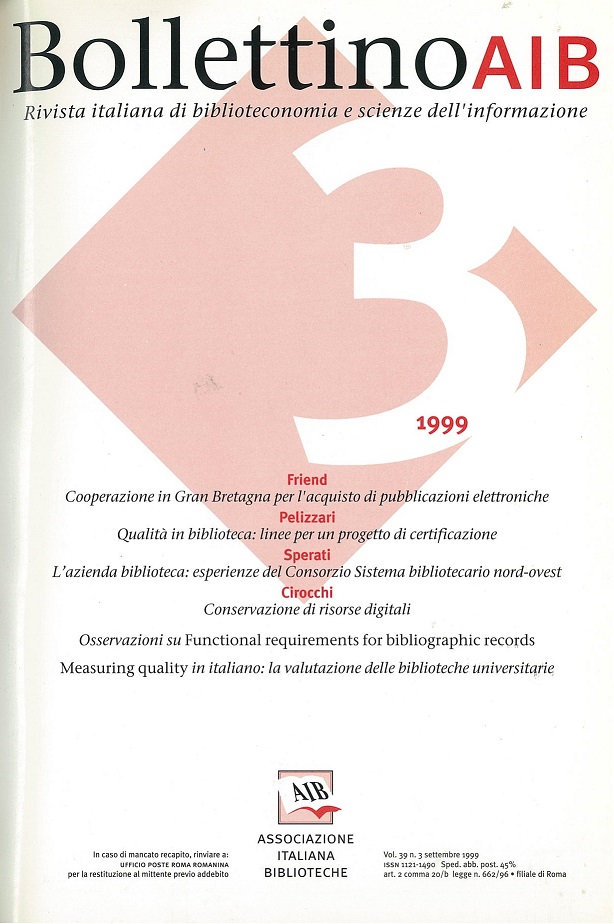The challenges of the preservation of digital resources
Main Article Content
Abstract
The role and usefulness of digital resources are the object of increasingly numerous and detailed reflections and studies; nonetheless, such studies all too often concentrate on the aspects related to the increase in the possibilities of information access and diffusion, or, at best, emphasise the advantages of digitalisation for the conservation of those collections of documents which are at risk as a result of both the precariousness of their own media and their intrinsic value.
However, it is rarely pointed out that this sector faces a problem of conservation characterised by electronic documents' high rate of obsolescence and that, furthermore, the digitalisation of the collections is not, in itself, a conservation strategy which, at present, allows librarians to sleep soundly.
The article outlines the possibilities and limits offered by digitalisation for conservation purposes, and, along the guidelines of the authoritative Report of the Task Force on Archiving of Digital Information, focuses attention on what are currently considered the valid strategies for the conservation of long-term access to electronic information, and in particular on the concept of data migration.
To this end, it is necessary to both firstly define the characteristics of the digital information subject to long-term conservation and what one means by digital archive and how the latter differs from a digital library.
It should be pointed out that the concept of the integrity of the information to be conserved and that of responsibility for, and of actively ensuring permanent access to the digital archives, are essential to the conservation function.
The paper mentions the need felt by several parties for a co-ordinated approach to the creation of metadata functional not only to the development of a "refined" search function, but also of a long-term conservation strategy.
Mark-up languages such as SGML and XML are another possible horizon for the solution of problems related to digital resource conservation precisely because of their specific characteristics: standardisation, flexibility, efficiency and re-useability, and their non-proprietary format: particularly indicated for the digital conversion of text documents where the importance and complexity of the informational content advises the choice of an instrument which allows a refined search, they would also appear to have a high level of efficiency as regards archiving and long-term access.
On the long-term conservation of digital-image archives, the article presents what will, in all probability, be deemed in the forthcoming decade as the preferred strategy for conservation: namely the "hybrid approach", based on the production of both digital images for access needs and of microfilm masters for conservation needs. The article then gives the results of two projects carried out by Yale and Cornell University respectively, which explore the possibilities and results of two different strategies: one based on the creation of digital images from microfilm, the other on the production of computer output microfilm from high-resolution digital images.
Article Details

This work is licensed under a Creative Commons Attribution-ShareAlike 4.0 International License.
